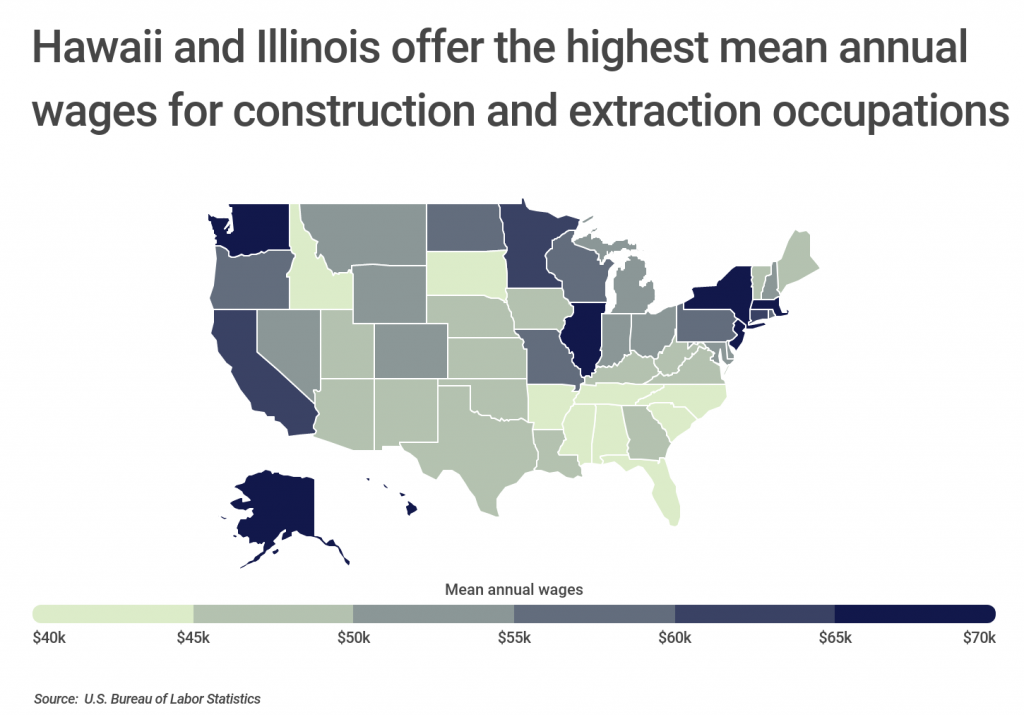
Photo Credit: Tong_stocker / Shutterstock
As the economy continues to recover from the COVID-19 pandemic, one of the most pronounced effects is on the job market for lower-wage professions.
Low-wage workers were among the hardest hit when large portions of the economy shut down at the outset of the pandemic, as employers in industries like retail and hospitality laid off workers en masse. More recently, many of these same businesses have been struggling to find labor, with workers declining to take the sorts of low-wage jobs they held pre-pandemic. Observers have offered many potential reasons why this is the case, from the continuation of expanded federal unemployment benefits to challenges finding reliable child and elder care to continued concerns about health and safety during the pandemic.
Regardless of the reason for the labor shortage, many employers are responding with one of the best tools at their disposal: increasing pay. Wages in the U.S. have been largely stagnant for decades but have spiked in recent months.
One industry that has benefited from this situation is construction. Demand for construction has been high due to a boom in the residential real estate market dating back to last summer. Many builders and contractors are eager to fill positions and keep projects moving, which means a high number of jobs are open—and more employers are raising wages in an attempt to lure workers in.

This trend has emerged even despite the fact that construction already pays well compared to other occupations with similar educational requirements and the fact that wage growth in the industry has matched inflation over the last two decades. While wages in the industry have shown some fluctuation—due at least in part to seasonality—the overall trend in construction wages since 2000 has been positive. At that time, median weekly wages in the industry were $571; by January 2020, that figure had surpassed $900.
Some locations are even more prosperous than others for construction workers. States with a strong union presence or prevailing wage laws tend to have the highest wages. Most of these locations are found in Northern and Western states. Hawaii leads the nation with mean annual wages of $72,960, followed by Illinois ($70,430), Massachusetts ($67,920), and New York ($67,580). In contrast, many of the lowest-paying states are found in the Southeast, including Arkansas ($40,560), Mississippi ($42,050), and Florida ($42,930).

The prospects for wages in construction also vary substantially by occupation within the industry, and some roles have shown more recent wage growth than others. To find the construction jobs with the fastest-growing wages, researchers at Construction Coverage used data from the U.S. Bureau of Labor Statistics to calculate the five-year percentage change in wage (adjusted for inflation) for 54 occupations. The researchers included only those professions which had statistically significant changes in wages from 2015 to 2020 after adjusting for inflation.
Here are the construction jobs with the fastest-growing wages.
The Top 15 Construction Jobs With the Fastest-Growing Wages

Photo Credit: ESB Professional / Shutterstock
15. Floor Layers, Except Carpet, Wood, and Hard Tiles
- 5-year percentage change in wage (inflation-adjusted): +7.1%
- 5-year percentage change in wage (nominal): +17.0%
- Mean annual wage (2020): $49,740
- Mean annual wage (2015): $42,520
- Total employment: 16,720

Photo Credit: ja-images / Shutterstock
14. Tapers
- 5-year percentage change in wage (inflation-adjusted): +7.2%
- 5-year percentage change in wage (nominal): +17.1%
- Mean annual wage (2020): $62,140
- Mean annual wage (2015): $53,080
- Total employment: 16,320

Photo Credit: Doucefleur / Shutterstock
13. Cement Masons and Concrete Finishers
- 5-year percentage change in wage (inflation-adjusted): +7.5%
- 5-year percentage change in wage (nominal): +17.4%
- Mean annual wage (2020): $49,390
- Mean annual wage (2015): $42,080
- Total employment: 195,580

Photo Credit: Tong_stocker / Shutterstock
12. Construction Laborers
- 5-year percentage change in wage (inflation-adjusted): +7.7%
- 5-year percentage change in wage (nominal): +17.6%
- Mean annual wage (2020): $43,000
- Mean annual wage (2015): $36,550
- Total employment: 971,330

Photo Credit: Pixel-Shot / Shutterstock
11. Helpers–Electricians
- 5-year percentage change in wage (inflation-adjusted): +8.2%
- 5-year percentage change in wage (nominal): +18.1%
- Mean annual wage (2020): $35,440
- Mean annual wage (2015): $30,000
- Total employment: 73,920

Photo Credit: anatoliy_gleb / Shutterstock
10. Solar Photovoltaic Installers
- 5-year percentage change in wage (inflation-adjusted): +9.7%
- 5-year percentage change in wage (nominal): +19.8%
- Mean annual wage (2020): $48,020
- Mean annual wage (2015): $40,070
- Total employment: 11,490

Photo Credit: irin-k / Shutterstock
9. Insulation Workers, Floor, Ceiling, and Wall
- 5-year percentage change in wage (inflation-adjusted): +10.6%
- 5-year percentage change in wage (nominal): +20.7%
- Mean annual wage (2020): $46,860
- Mean annual wage (2015): $38,810
- Total employment: 32,780

Photo Credit: kobeza / Shutterstock
8. Helpers–Painters, Paperhangers, Plasterers, and Stucco Masons
- 5-year percentage change in wage (inflation-adjusted): +10.8%
- 5-year percentage change in wage (nominal): +21.1%
- Mean annual wage (2020): $33,520
- Mean annual wage (2015): $27,690
- Total employment: 9,500

Photo Credit: Anna Berdnik / Shutterstock
7. Helpers–Carpenters
- 5-year percentage change in wage (inflation-adjusted): +10.9%
- 5-year percentage change in wage (nominal): +21.1%
- Mean annual wage (2020): $35,360
- Mean annual wage (2015): $29,200
- Total employment: 30,900

Photo Credit: Doralin Samuel Tunas / Shutterstock
6. Terrazzo Workers and Finishers
- 5-year percentage change in wage (inflation-adjusted): +12.2%
- 5-year percentage change in wage (nominal): +22.6%
- Mean annual wage (2020): $56,440
- Mean annual wage (2015): $46,050
- Total employment: 2,970

Photo Credit: Dany_cn / Shutterstock
5. Plasterers and Stucco Masons
- 5-year percentage change in wage (inflation-adjusted): +13.4%
- 5-year percentage change in wage (nominal): +23.8%
- Mean annual wage (2020): $52,100
- Mean annual wage (2015): $42,070
- Total employment: 25,210

Photo Credit: bogdanhoda / Shutterstock
4. Helpers–Brickmasons, Blockmasons, Stonemasons, and Tile and Marble Setters
- 5-year percentage change in wage (inflation-adjusted): +14.7%
- 5-year percentage change in wage (nominal): +25.2%
- Mean annual wage (2020): $40,190
- Mean annual wage (2015): $32,090
- Total employment: 21,410

Photo Credit: Attasit saentep / Shutterstock
3. Helpers–Roofers
- 5-year percentage change in wage (inflation-adjusted): +15.5%
- 5-year percentage change in wage (nominal): +26.1%
- Mean annual wage (2020): $35,080
- Mean annual wage (2015): $27,820
- Total employment: 8,390

Photo Credit: alarich / Shutterstock
2. Pile Driver Operators
- 5-year percentage change in wage (inflation-adjusted): +19.3%
- 5-year percentage change in wage (nominal): +30.3%
- Mean annual wage (2020): $71,880
- Mean annual wage (2015): $55,150
- Total employment: 3,820

Photo Credit: AlexandrBognat / Shutterstock
1. Paperhangers
- 5-year percentage change in wage (inflation-adjusted): +24.6%
- 5-year percentage change in wage (nominal): +36.1%
- Mean annual wage (2020): $49,820
- Mean annual wage (2015): $36,610
- Total employment: 2,820
Detailed Findings & Methodology
The data used in this analysis is from the U.S. Bureau of Labor Statistics Occupational Employment and Wage Statistics. To determine the construction jobs with the fastest-growing wages, researchers calculated the five-year percentage change in wage (inflation-adjusted) for 54 professions and used only those for this analysis which had statistically significant changes in wages from 2015 to 2020.
